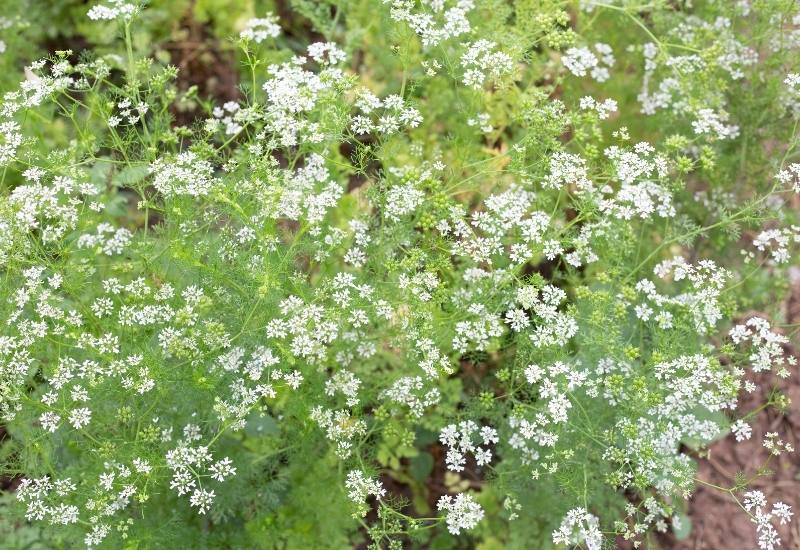
Cilantro bolting just in the peak of salsa season is a frustrating problem for gardeners around the country. Many gardeners wonder what they should do about cilantro to keep cilantro plant from flowering and/or set seed.
You can cut the cilantro flower stalk off to try to prolong leaf production, but there is truly no reversing the plant’s innate instinct once it begins to flower.
Instead, you can plan for more cilantro successions, direct seed in the garden, provide plenty of water, and choose bolt-resistant varieties to prolong your cilantro leaf harvest.
What is Bolting?
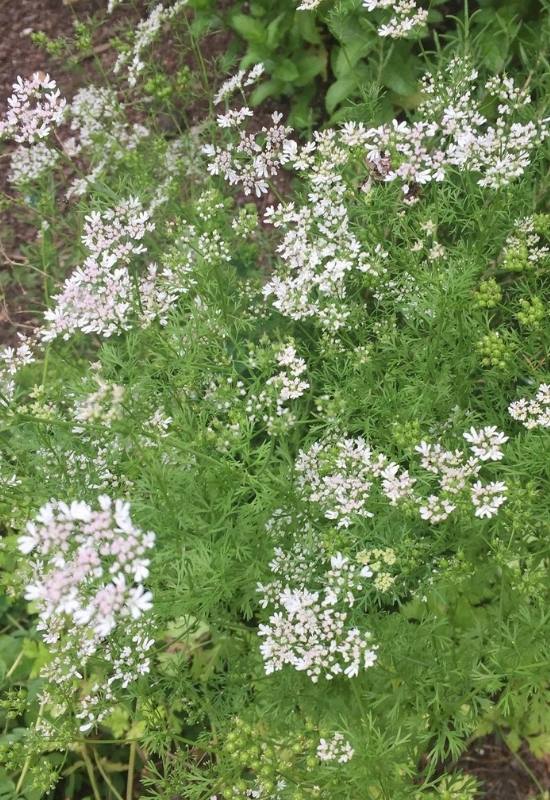
Plants are naturally wired to reproduce and spread their progeny as far and wide as possible. Bolting is the shift from vegetative growth (leaves, stems, roots) to reproductive growth (flowers and seeds).
While this can result in a beautiful show, it’s not always great for a vegetable gardener hoping to harvest the leaves of their plants.
Bolting changes the morphology (physical attributes) of the plant as well as the flavor and texture. Many plants, including cilantro, lose their flavor when bolting because all of their energy is going into the flowers and seeds.
Why is my Cilantro Plant Flowering?
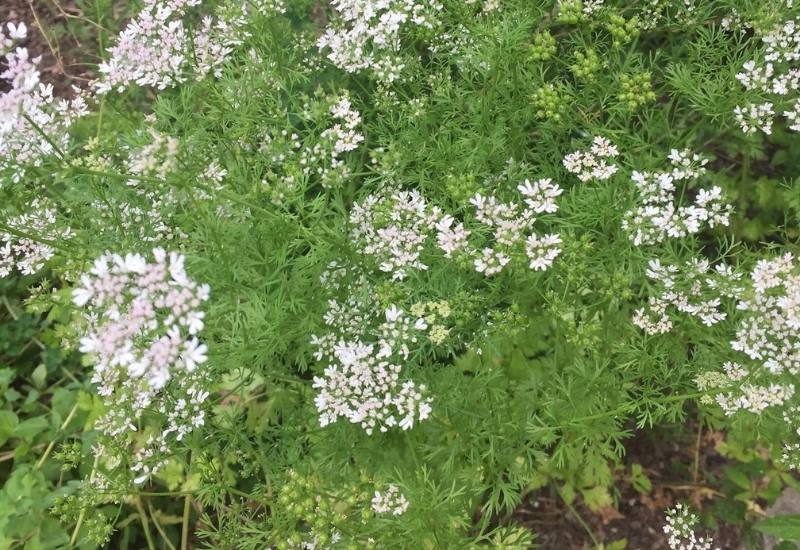
Cilantro (Coriandrum sativum) is a cool-weather plant that enjoys spring and autumn weather. Cilantro will rapidly bolt in hot weather as a survival mechanism.
The plant senses the changing temperatures and daylight, so it sends up its flower stalk to try to reproduce before its lifecycle ends.
Fortunately, there are a few steps you can take to prevent cilantro from flowering so you can have tasty cilantro in your garden for most of the season.
What to Do When Cilantro Bolts
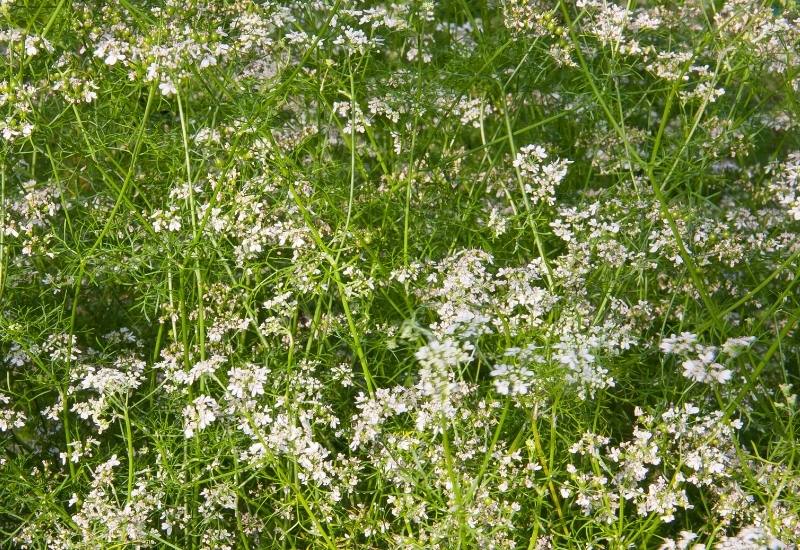
Cilantro is pretty finicky when it comes to warm weather (ironically when we want to enjoy it alongside tomatoes and peppers).
It can be really frustrating to seed and tend cilantro only to have it bolt as soon as summer’s first heat waves come through. Bolting is gardener-jargon for going to seed, and it essentially ruins the flavor of the leaves.
1: Cut off the Flower Stalk
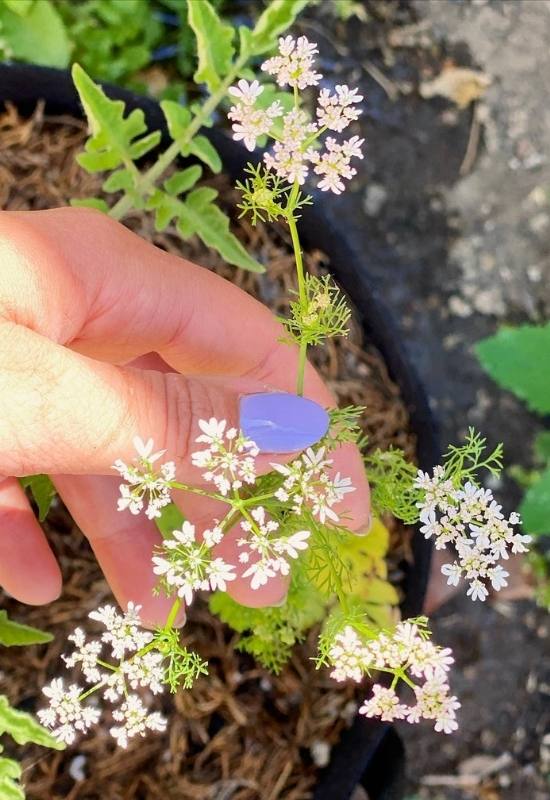
Cutting off the flower stalk may delay bolting for another week if you’re lucky, but once the plant is too far along in its flowering process there isn’t much you can do. Fortunately there are many hidden benefits to cilantro bolting in the garden…
2: Harvest Fresh Coriander
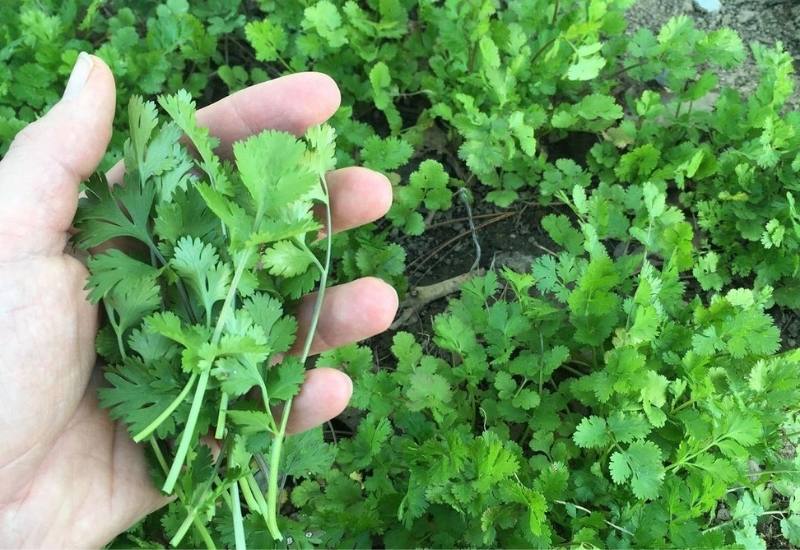
On the bright side, bolted cilantro makes for a gorgeous and functional garden flower. The young seed heads are known as “green coriander” and are a delicacy in Asian, Mexican, Thai, and Indian cuisines.
You can harvest cilantro seed heads just after the white flowers have faded and use them in a variety of dishes. The mature seeds (coriander) can be dried and stored in spice jars all winter long.
3: Use it for Biocontrol
Cilantro flowers are also amazing for biocontrol in the garden. These umbel-shaped carrot-family blossoms attract an abundance of beneficial insects, including parasitic wasps and hoverflies. These beneficials help keep pests in check by promoting a healthy garden ecology.
4: Attract Pollinators
In addition, cilantro flowers obviously attract plenty of pollinators. Native bees love the sweet juicy nectar and you will often find them buzzing around a bolted cilantro patch.
If you hope to have an abundance of squash, tomatoes, peppers, or other bee-pollinated vegetables in your garden, you will be glad to keep bolted cilantro around.
But at the end of the day, all these uses for the lovely cilantro flowers and seeds don’t do you much good for cooking with the coveted cilantro leaf.
In order to grow cilantro leaves that are full of herbal flavor, you will need to take a few steps to prevent cilantro from bolting.
How to Stop Cilantro from Bolting
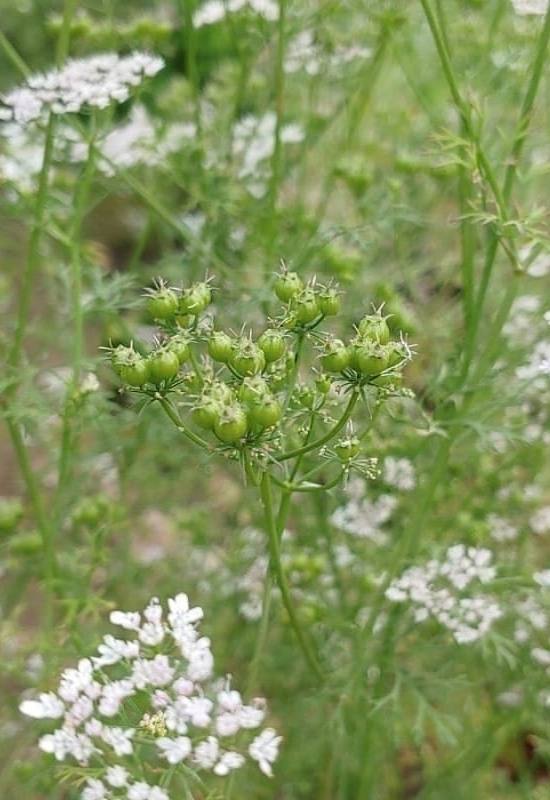
If you’re sick of cilantro bolting before you get to enjoy its herbal flavor, don’t worry! This is a common issue for even the most experienced farmers and gardeners. Here are a few strategies for preventing cilantro plants from going to seed.
1: Plant in Cool Weather
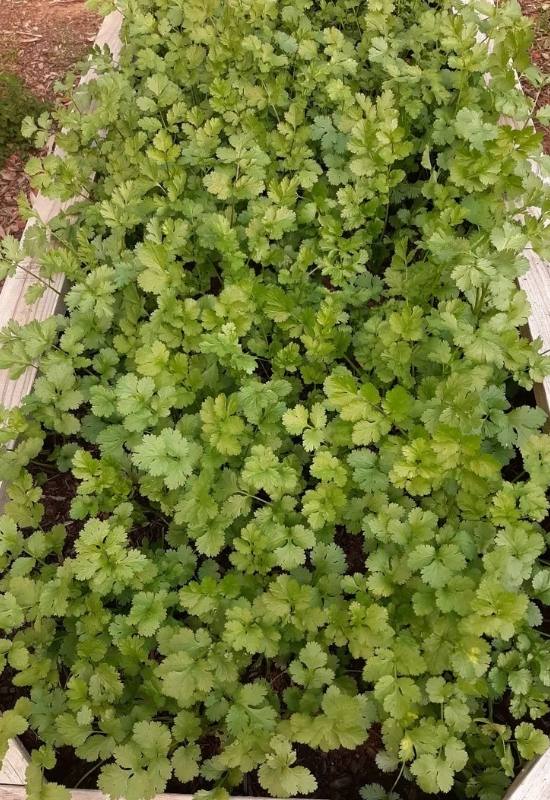
Cilantro thrives in the cool temperatures of spring and fall. It is actually quite frost resistant and can be seeded as early as a few weeks before the last frost.
It prefers temperatures between 50 and 80°F, but tolerates down to 10°F once established.
But this doesn’t help gardeners who want to enjoy cilantro alongside their fresh picked tomatoes.
Depending on your environment, you can give cilantro a cooler environment by planting in slightly shadier areas of the garden (not too much shade!) or using shade cloth and overhead irrigation to keep it cool on the hottest summer days.
2: Avoid Water Stress
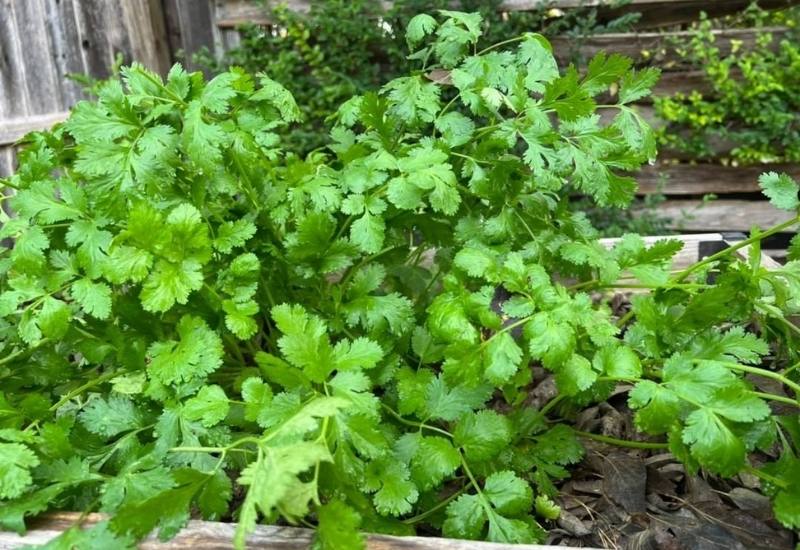
When cilantro doesn’t get enough water, it gets stressed and may bolt prematurely. It is important to find moist (but never soggy) soil for cilantro as temperatures warm.
3: Succession Planting
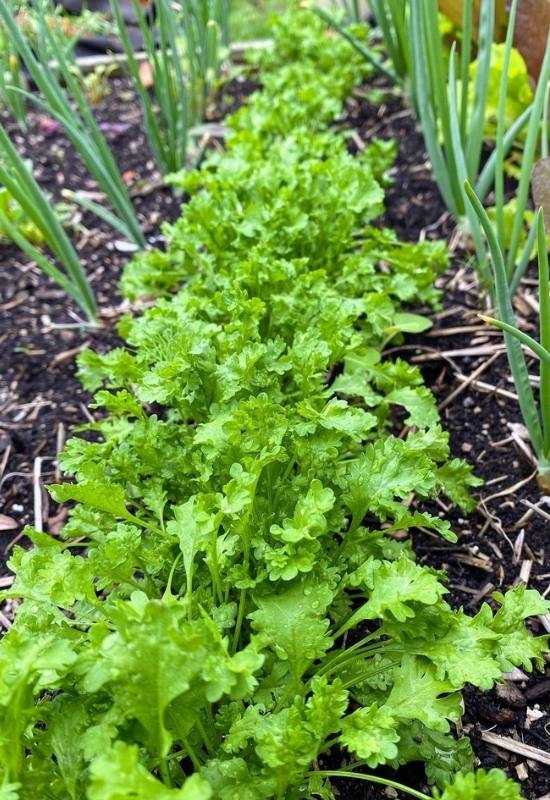
Succession planting is just a fancy word for choosing several planting dates throughout the season in order to ensure a continuous supply of a given garden crop.
Cilantro is a great option for succession planting because, instead of investing all your time and effort into a single crop, you can stagger the plantings for more chances of success.
To succession plant cilantro, direct sow seeds every 2-3 weeks into early summer and begin again in late summer or early fall.
You can squeeze in several successions of cilantro in most growing zones. Just as one planting begins to bolt, you’ll have another set of cilantro plants almost ready to harvest (and you should probably seed another one at that point as well).
4: Direct Seed In Garden
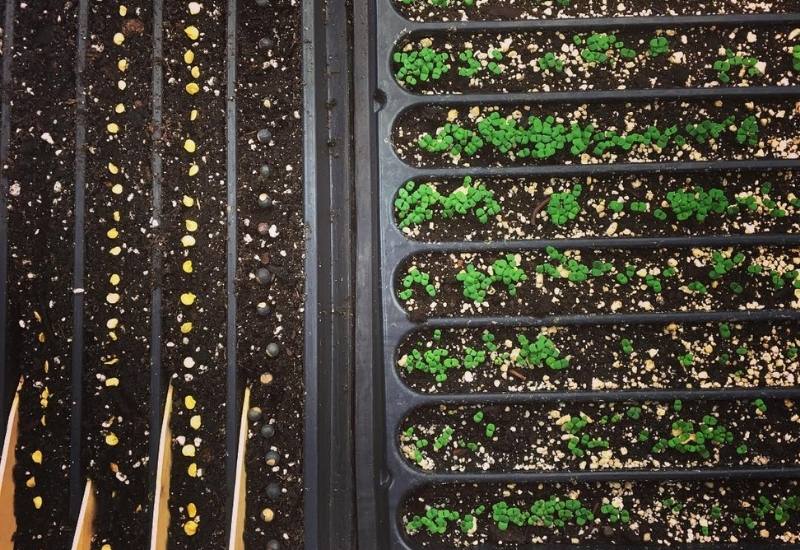
To prevent cilantro bolting, you should always direct sow cilantro seeds about ¼” to ½” deep in the loamy well-drained garden soil.
Because it is cold hardy and germinates quickly, there is no need to start cilantro indoors or purchase transplants.
5: Proper Spacing
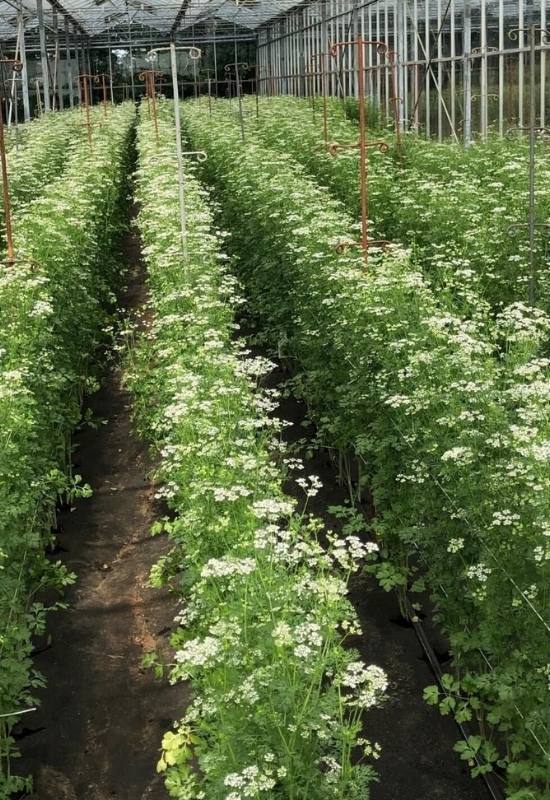
When plants are crowded too close together they tend to get a little stressed out. They are competing for space, light, water, and nutrients.
Stress can also be a factor in bolting because the plant is instinctively trying to complete its life cycle more rapidly so it has a better chance at reproducing.
Cilantro plants should be planted densely enough to outcompete weeds, but with enough space for individual plants to thrive. The ideal spacing for cilantro is ¼” to 1/2” between plants and 3” to 4” between rows.
6: Harvest Frequently
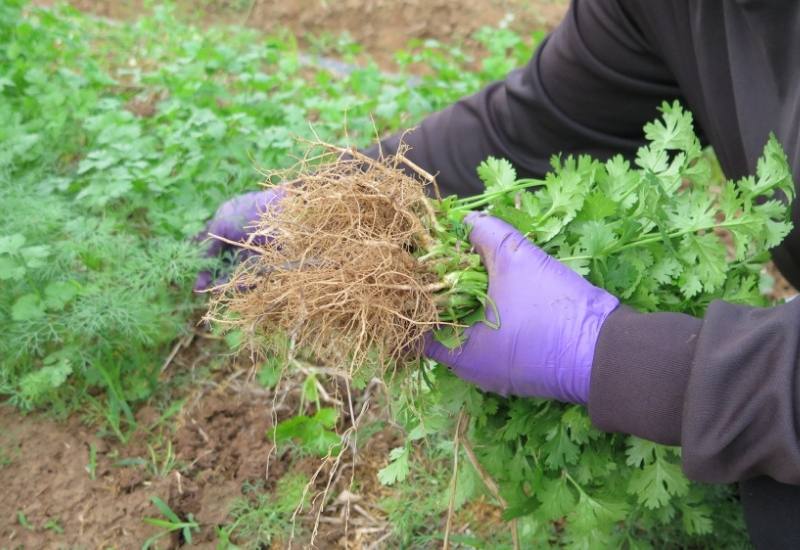
Cilantro really likes to be picked because it encourages more leaf growth. If you harvest frequently, you will prolong the vegetative stage and prevent the cilantro from bolting too quickly.
Use your fingers or snips to regularly cut off the larger leaves, starting at the bottom of the plant.
These frequent visits to the cilantro patch will also ensure that you can catch young flowering stalks early and nip them in the bud. This will delay bolting for longer leaf harvests.
7: Choose Bolt-Resistant Varieties
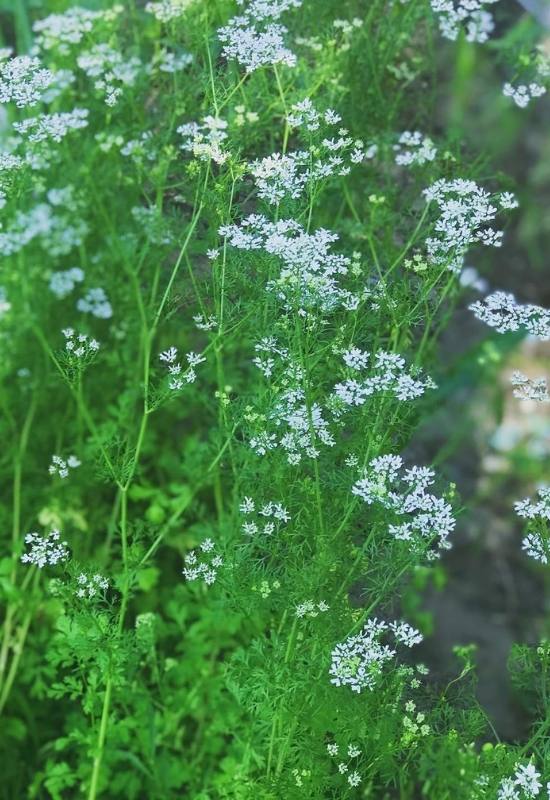
Plant breeders have been hard at work for many decades trying to perfect bolt-resistant cilantro for growing on a commercial scale.
This is why you can still find cilantro in grocery stores and at farmer’s markets even during hot summers. Bolt-resistant varieties are often hybridized or selected from open-pollinated seed stocks to be most resilient in the face of heat stress.
Bolt-Resistant Cilantro Varieties
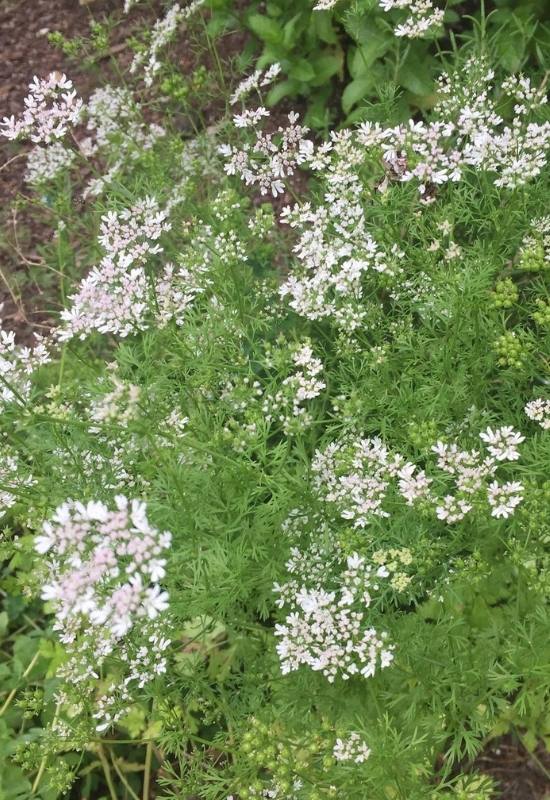
Keep in mind that bolt-resistant doesn’t mean it won’t ever bolt; these plants have simply been bred to slow down the bolting process so that you get a longer harvest window.
‘Caribe’
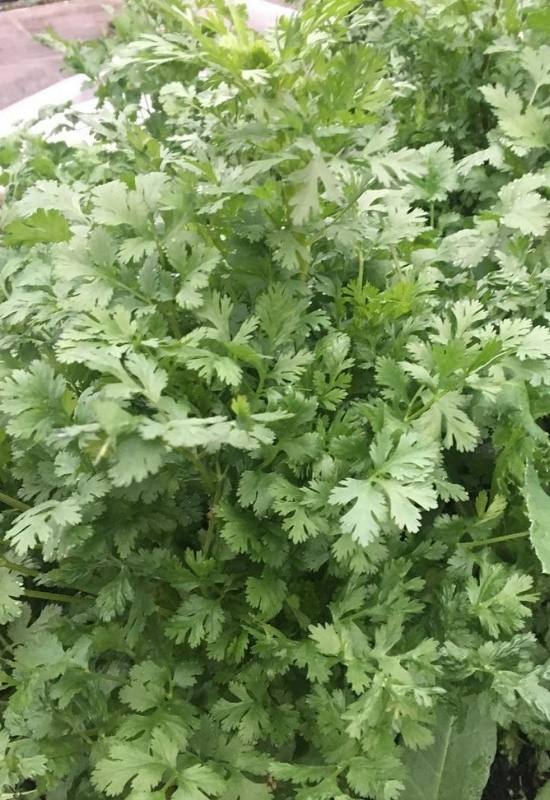
This is a highly coveted greenhouse cilantro variety because it yields aromatic bunches of deep green cilantro that are long standing and very bolt-tolerant. It takes 55 days to mature and has slim stems with gorgeous dense leaves.
‘Calypso’
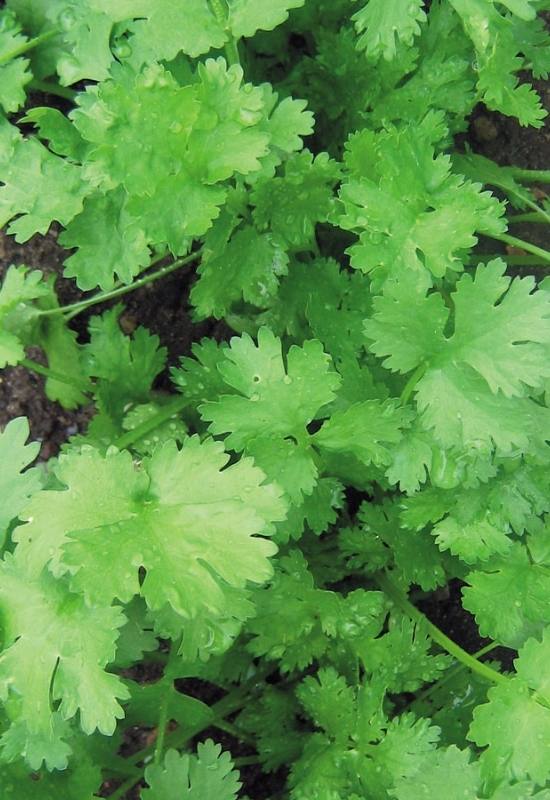
A farmer staple, ‘Calypso’ is 3 weeks slower to bolt than most varieties. It takes 50-55 days to mature and is as bolt-resistant as cilantro can get.
‘Cruiser’
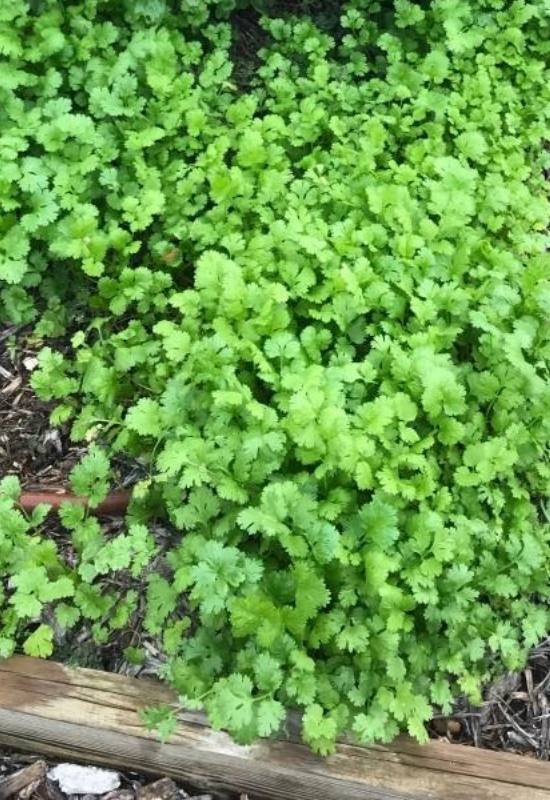
This variety has a tidy, upright growing habit and excellent bolt resistance. The leaves are large and the stems are sturdy. It takes 50-55 days to mature and tolerates the heat of southern climates.
Can you eat cilantro that has bolted?
All parts of the cilantro plant are edible during all stages of growth. However, once cilantro has bolted the leaves become bitter and tough. The fresh green seed heads make a delightful green coriander, or you can allow the seeds to mature into dry coriander.
Will cilantro grow back after bolting?
Unfortunately, once cilantro bolts, you cannot make it go back to leaf production. This is because it has already transitioned from vegetative growth (leaves and stems) to reproductive growth (flowers and seeds). The best bet is to succession plant cilantro every 1-2 weeks for staggered harvests.
What do you do with bolted cilantro?
Bolted cilantro tops can be eaten as fresh green coriander (a delicacy in Asian, Italian, and Mediterranean cuisine). It can also be left in the garden to provide beneficial habitat for biocontrol insects and pollinators.
Is cilantro bolting bad?
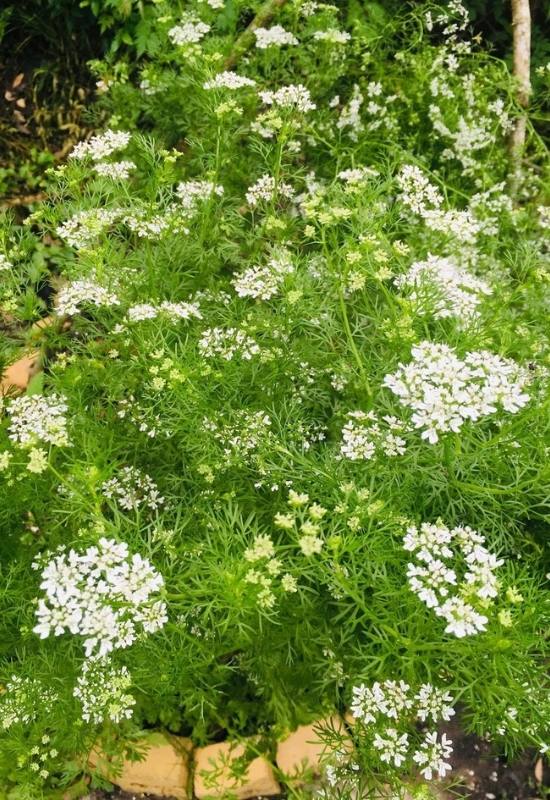
As a cool-weather annual, cilantro bolting is a natural part of the plant’s life cycle. Unfortunately it causes the leaves to get bitter and tough.
Grow cilantro in cooler parts of the season, practice succession planting, and choose bolt-resistant varieties to prolong the leafy herb harvest.
Conclusion
Cilantro is one of those herbs people love or hate. For those of us without the “soapy cilantro taste” gene, cilantro is a garden staple for salsa, pesto, or a garnish on our favorite recipes.
It repels pests with its strong smell, attracts beneficial insects, and compliments so many vegetables in the kitchen.
Next time you plant cilantro, take a few of these steps to prevent bolting so you can enjoy this herb all season long.
Don’t forget to take note of what works best so you can grow amazing cilantro in next year’s garden.
Happy growing!

Written By
Amber Noyes
Amber Noyes was born and raised in a suburban California town, San Mateo. She holds a master’s degree in horticulture from the University of California as well as a BS in Biology from the University of San Francisco. With experience working on an organic farm, water conservation research, farmers’ markets, and plant nursery, she understands what makes plants thrive and how we can better understand the connection between microclimate and plant health. When she’s not on the land, Amber loves informing people of new ideas/things related to gardening, especially organic gardening, houseplants, and growing plants in a small space.
